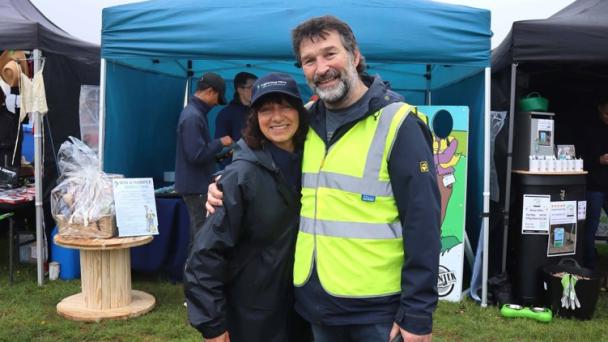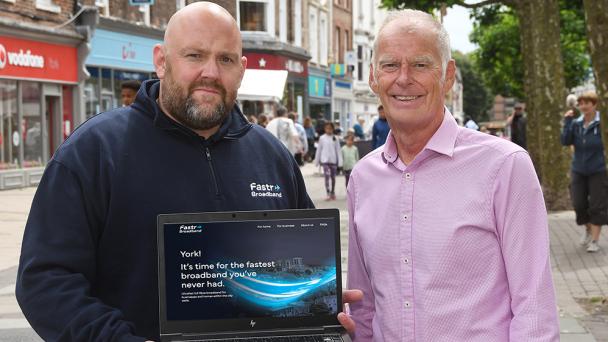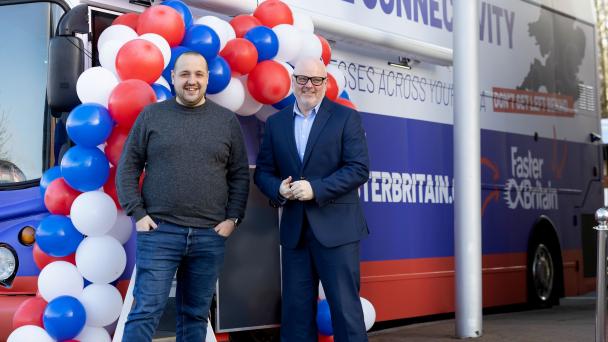Lightning Fibre has thrown its support behind the Heathfield Show for the fourth consecutive year.

Full fibre is a critical asset for families and businesses post-covid, but marketing departments must work hard to ensure that customer engagement is early, positive and clear.
Some legacy marketing issues have contributed to slow fibre adoption in the UK, with the Connected Nations 2021 report estimating that where fibre is available, take-up sits at around 24%.
Openreach recently urged businesses in the north of Tyne to discuss fibre options with altnets due to this figure sitting below 20%.
According to Tanya Thorne, CMO at Giganet, age-old inconsistencies in language use are one example of marketing putting off the end-user.
“One of the major challenges in marketing fibre to communities is that consumers are still being confused by the use, and abuse, of the term ‘fibre’ in broadband ISP advertising,” she said.
She is supported by a WIK study, commissioned by the FTTH Council in Europe which highlighted how altnets have historically used the term fibre for hybrid connections such as FTTC, whereas in France only ISPs delivering FTTP can use the word in their advertising.
Dannii Sumpter, Marketing Manager at FullFibre, explains why this confusion has become such a challenge for the modern altnet marketeer.
She said: “When a user understands the product, then they’re able to make better informed decisions about the service they receive. They know what a good price is, what a good speed is and what good service looks like.
“The biggest challenge we face, especially given the rurality and isolation of the majority of our build towns, is awareness of the product and educating users; informing residents ‘this is what the product is’, ‘this is how it works’ and ‘this is what it can do for you.”
Fixing this trust issue requires honesty, transparency and consistency in approach. “Altnets must provide customers with exactly what is advertised, no frills and no complicated jargon,” said Thorne.
Sumpter highlights the importance of connecting with the communities that you are connecting as a method of bridging the gap between the altnet and the end-user.
“By embedding ourselves in our local communities through our B2C brand Fibre Heroes, it allows us to understand what makes each of our towns ‘tick’,” she said.
“Sponsoring local events, addressing concerns of individual users & being frequently present within the town means that the customers we hand over to partner’s already know the values of the brand upgrading their infrastructure.”
A potential customer can often hold a negative view of an altnet due to roadwork disruptions and noise, so being present in a positive way is key to shifting this narrative.
Todd Johnson, Director at Marketing Specialist firm Emerald Colour agreed: “Being relevant to a community and understanding their issues is a really good way to create a buzz locally and being seen as ‘their’ fibre provider.
“Speculating to accumulate really is the order of the day here. Regular contact, community-based activities and relevant offers really will pay dividends in this increasingly crowded marketplace.”
As altnets move past the issues set by inconstant communications another challenge looms, with overbuild the inevitable product of success in the sector.
This overbuild has provided choice to the end-user which in turn means competition for the fibre provider.
Johnson said: “Marketing fibre to target communities is a real challenge. With so many providers in the market, standout is really important. After all, if people don’t remember you, how do you expect them to buy from you.
“Set a sensible budget and realistic expectation of ROI. There’s no point in putting a tiny budget behind a campaign and expecting massive returns. It simply won’t happen. High-visibility - and timely – micro-targeted campaigns can really deliver.”
So how do altnets now go about measuring the success of these campaigns and ensure they are getting a fair slice of the pie?
Johnson said: “Sign-ups are the easiest way to measure success, but don’t forget that regular contact will increase the chances of being the provider they choose to go with.”
Sumpter added: “Having tactile data that our brand awareness & conversion funnels are working is a huge motivator when it comes to understanding success as this directly contributes to our partners growth.”
Alternatively, according to Thorne: “At Giganet we measure marketing success by customer service feedback and Trustpilot score – this provides a true reflection of how people feel towards their service and reflects our brand.”
This shows that fibre providers have a few tools in their arsenal to measure the potency of their marketing campaigns.
Lead generations and signups will reflect if community efforts and advertising have been effective, whilst metrics such as Trustpilot score will suggest that this marketing has been accurate, with the altnet not promising things it cannot deliver.




